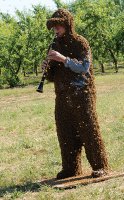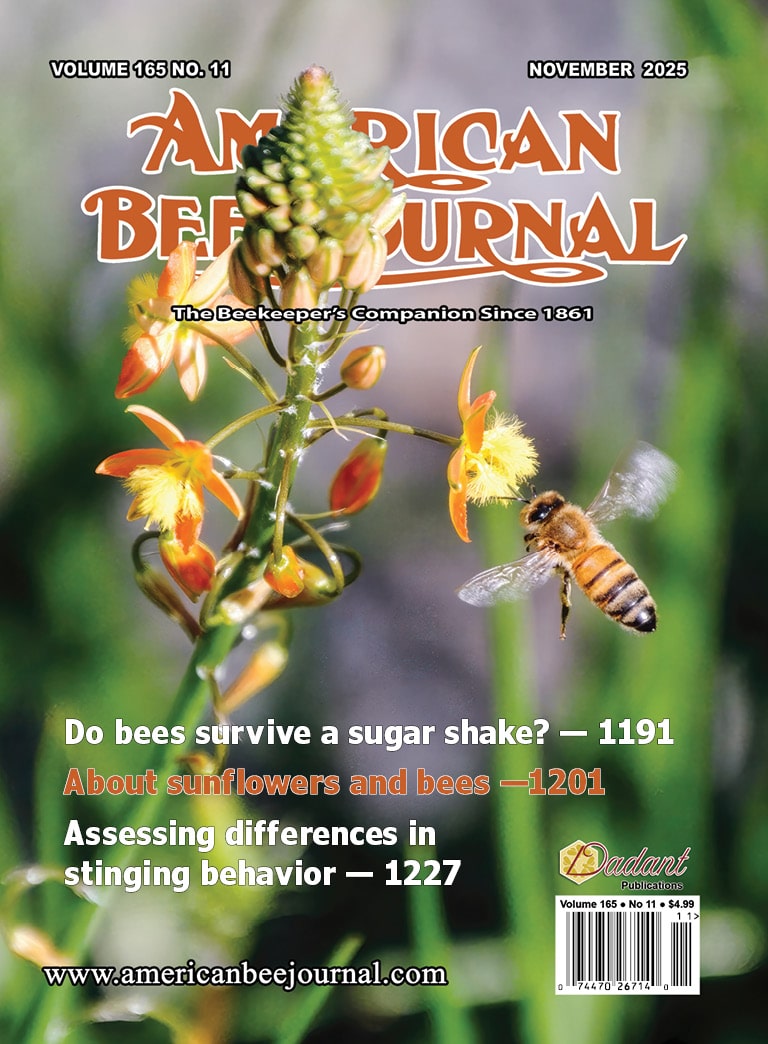 DAVIS—Pesticides, parasites, predators, and a multitude of microorganisms threaten the survival of honey bees, says retired apiculturist Norman Gary of the University of California, Davis, but so do hobby beekeepers in urban environments who are rearing too many colonies for bees to “survive and thrive.”
DAVIS—Pesticides, parasites, predators, and a multitude of microorganisms threaten the survival of honey bees, says retired apiculturist Norman Gary of the University of California, Davis, but so do hobby beekeepers in urban environments who are rearing too many colonies for bees to “survive and thrive.”
They should limit their hobby to two colonies, says Gary, 85, whose expertise in beekeeping, including professor, scientist, author and professional bee wrangler, spans seven decades.
“Increasing populations of bees can easily ‘overgraze’ the resources,” Gary explains. “Excessive competition for limited nectar and pollen sources also threatens hundreds of native bee species, such as bumble bees, that have similar dietary requirements.”
In his newly published second edition of his book, Honey Bee Hobbyist: The Care and Keeping of Bees (Fox Chapel Publishing, East Petersburg, Pa.), he includes a chapter on “Urban Entomology” that “treads on sacred beekeeping ground by proposing a radical change to beekeeping in urban environments.”
But it’s time “to recognize the realities of the urban environment and make appropriate changes in beekeeping practices,” he declares.
Gary, a Sacramento-area resident known internationally as “The Bee Man” says that urban environments vary greatly, from the heart of New York City or San Francisco where small residential lots typically have limited vegetation to smaller urban areas that that often have “open countryside within the foraging area of your bees.”
“The yield of honey per colony is declining significantly in urban environments,” he says. “These declines leave no doubt that overpopulation of bees in urban settings is the primary cause. Few beekeepers are aware that each bee colony consumes at least 100 pounds of honey annually, made from approximately 200 pounds of nectar! When nectar is abundant and there is good weather for foraging, a typical honey colony has the potential to produce more than 100 pounds of harvestable honey per year.”
“This is far more than typical hobby beekeepers are harvesting these days,” Gary relates. “It should be obvious that hobby beekeepers are keeping too many colonies in the typical urban environment.”
“Hobby beekeepers typically start out with one or two hives, but that often leads to several more due to their enthusiasm for keeping bees and harvesting more honey and equating the number of hives with elevating their status as beekeepers.”
In his book, he shares his beekeeping knowledge, dispels many beekeeping myths and provides science-based information. He covers such subjects as “To Beekeep or Not to Beekeep,” “The Bees’ Home,” “Reproduction,” “Colony Defense and Sting Prevention” and activities inside and outside the hive.
New additions include chapters on beekeeping clubs, entertaining with bees, and formal beekeeping education (including the UC Davis-based California Master Beekeeping Course, headed by Extension apiculturist Elina Lastro Niño).
Gary, who holds a doctorate in entomology from Cornell University, joined the UC Davis entomology faculty in 1962, retiring in 1994 after a 32-year academic career. He has authored more than 100 publications, including scientific papers, book chapters and popular articles in beekeeping trade journals.
A 70-year beekeeper–one of the longest in the nation–Gary began keeping bees at age 15 in Florida. His career includes hobby beekeeper, commercial beekeeper, deputy apiary inspector in New York, honey bee research scientist, entomology professor, author, bee wrangler and Guinness World record holder.
During his professional bee wrangler career spanning four decades, “The Bee Man” served as a consultant and bee stunt coordinator for 17 movies, 70 TV shows and six TV commercials. Among his credits: “Fried Green Tomatoes” and appearances with Johnny Carson and Jay Leno on Tonight Shows.
He launched the Thriller Bee Shows, performing more than 100 times in three western states, with venues that included the California State Fair. He drew widespread acclaim for wearing a head-to-toe suit of clustered bees while “Buzzin’ with His Bee-Flat Clarinet.”
Gary once trained bees to fly into his mouth to collect food from a small sponge saturated with artificial nectar. His holds the Guinness World record (109 bees inside his closed mouth for 10 seconds) for the stunt. He’s also the person behind the “bee suit” record in the Guinness World Records; Gary clustered more than 87 pounds of bees on a friend.
Today, as a musician, he plays the clarinet, alto sax, tenor sax, and flute with several groups, and is updating his website, http://www.normangary.com.
No more “Buzzin’ with His Bee-Flat Clarinet,” though.


